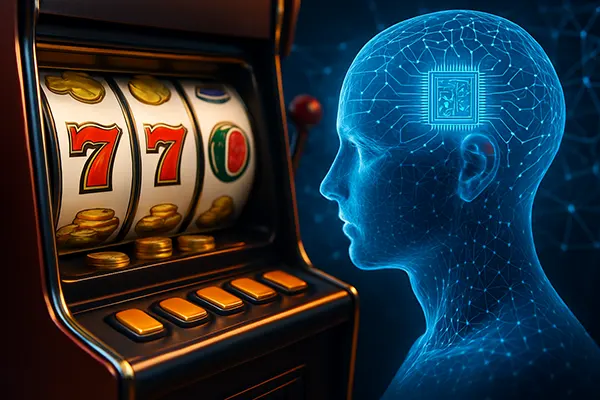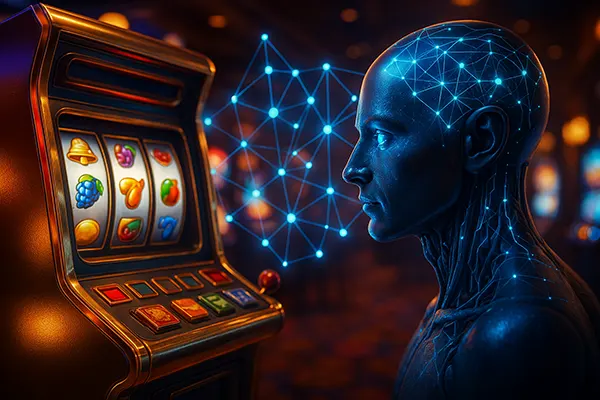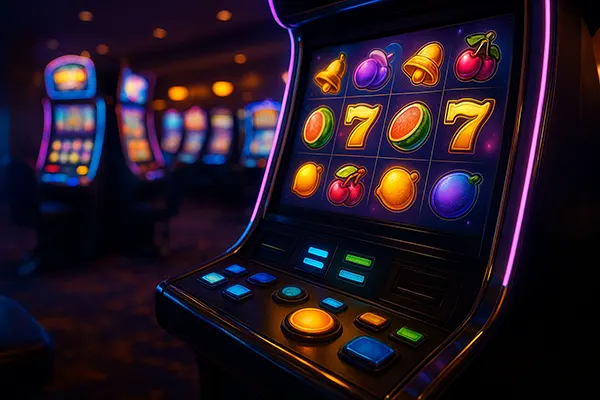
Neural Networks in Slot Creation: How Modern AI Design Alters Player Odds
The role of artificial intelligence in the gambling industry has evolved far beyond automation and customer support. Today, neural networks are actively transforming how online slots are developed, influencing everything from visual themes to gameplay dynamics and even player outcomes. This shift is redefining how fairness, personalisation, and profitability are balanced in modern slot design.
The Role of Neural Networks in Slot Game Design
Slot game development traditionally relied on predefined mechanics, RNG systems, and graphic design teams working separately. However, neural networks now allow for integrated AI-driven processes where algorithms can analyse player behaviour, optimise game flow, and create adaptive designs that evolve over time. As of February 2025, leading studios such as NetEnt and Playtech are investing in AI models capable of iterating design concepts in minutes, based on real-world user interaction data.
These networks simulate thousands of gameplay scenarios, fine-tuning everything from bonus frequency to volatility. This enables developers to strike a precise balance between engagement and profitability. Importantly, AI does not replace creative teams but works in tandem with them to push innovation while preserving entertainment value.
Moreover, neural networks are streamlining the testing phase. Automated models run simulations that once took weeks in a matter of hours, allowing studios to identify glitches, optimise payout curves, and ensure compliance with regulatory bodies. This accelerates the go-to-market timeline and reduces production costs, benefiting both developers and players through more polished releases.
AI-Powered Personalisation and Dynamic RTP Models
AI in slot development also enables a new layer of personalisation. Neural networks can adapt features such as bonus triggers, animations, and even music based on a player’s interaction history. This tailored experience aims to enhance retention and immersion without compromising responsible gaming principles.
In 2025, some platforms are experimenting with dynamic RTP (Return to Player) models—still under strict regulation—where the system slightly adjusts the payout percentage in real time based on risk factors, player behaviour, and engagement. While controversial, this approach is being trialled under transparent frameworks in jurisdictions like Malta and Sweden, focusing on maintaining fairness.
Personalisation through AI doesn’t mean manipulative gameplay. Operators are now obligated to show transparency in AI use, displaying how algorithms influence gameplay features and outcomes. This regulatory push ensures AI acts as a tool for enhancement rather than exploitation.
Impact on Fairness and Regulatory Compliance
One of the major concerns around the use of AI in slots is the perception of fairness. Players want assurance that the games they engage with are not rigged or subtly biased by machine learning algorithms. In response, regulatory bodies like the UK Gambling Commission and MGA have introduced new AI audit protocols that require transparency and traceability in AI-generated mechanics.
In 2025, compliance teams use AI validation tools to verify game fairness and randomness. These systems cross-check AI-produced code against licensing standards, ensuring outcomes remain statistically fair. Furthermore, regulators are demanding AI “black box” models be accompanied by explainable AI techniques, where developers must detail the logic behind AI decisions.
This level of scrutiny builds trust. Knowing that slot games powered by AI must pass rigorous audits and provide data transparency helps reinforce player confidence in modern titles. Additionally, developers embracing ethical AI standards are becoming preferred partners for top-tier operators.
Player Rights and Transparent Use of AI
To maintain user trust, game providers are introducing real-time AI usage disclosures. These indicators inform players when and how AI has influenced specific game mechanics, such as bonus frequency or graphical changes. It’s part of a broader initiative in 2025 aimed at promoting informed gaming decisions.
Players can now access dashboards showing historical payout data, average session times, and volatility levels—generated through neural network analysis. This empowers users to better understand how games function, encouraging more informed and responsible play.
Transparency is also being supported through third-party certifications. Bodies such as eCOGRA and iTech Labs now offer AI verification seals, which confirm that neural networks used in slot design meet ethical and fairness benchmarks. This adds another layer of security for both operators and end users.

Innovative Slot Features Driven by AI
In terms of creativity, AI is pushing slot mechanics into unexplored territories. Features such as evolving narratives, real-time difficulty adjustment, and player-specific challenges are becoming feasible thanks to neural networks. These innovations aim to create deeper player engagement beyond mere spinning reels and static paytables.
Some recent examples include AI-generated mini-games triggered by unique behavioural patterns. For instance, a player consistently chasing bonuses may receive a tailored storyline where reward chances adjust dynamically, fostering emotional connection and repeat engagement. These features are being trialled in beta versions of upcoming titles from providers like Yggdrasil and Pragmatic Play.
Furthermore, AI is enabling accessibility enhancements. Slots are now being designed to adapt visual contrast, pace, and even voice instructions depending on the user’s profile. This ensures that a broader audience, including players with visual or cognitive impairments, can enjoy a more inclusive experience.
AI and the Future of Slot Game Development
The trajectory of AI integration in slot creation is only accelerating. Studios are currently testing generative models that produce entire slot themes, mechanics, and art styles from a single prompt. This will drastically reduce development cycles and allow hyper-niche games to emerge targeting very specific player segments.
Nonetheless, experts stress that human creativity remains central. AI is a powerful assistant, not a replacement. The most successful projects of 2025 combine machine intelligence with human insight, resulting in games that are both innovative and emotionally resonant.
In the near future, we can expect hybrid teams—comprising artists, data scientists, and game psychologists—working together with neural networks to deliver next-generation entertainment experiences. These developments signal a future where slots are not just games of chance, but personalised, ethical, and immersive journeys.





